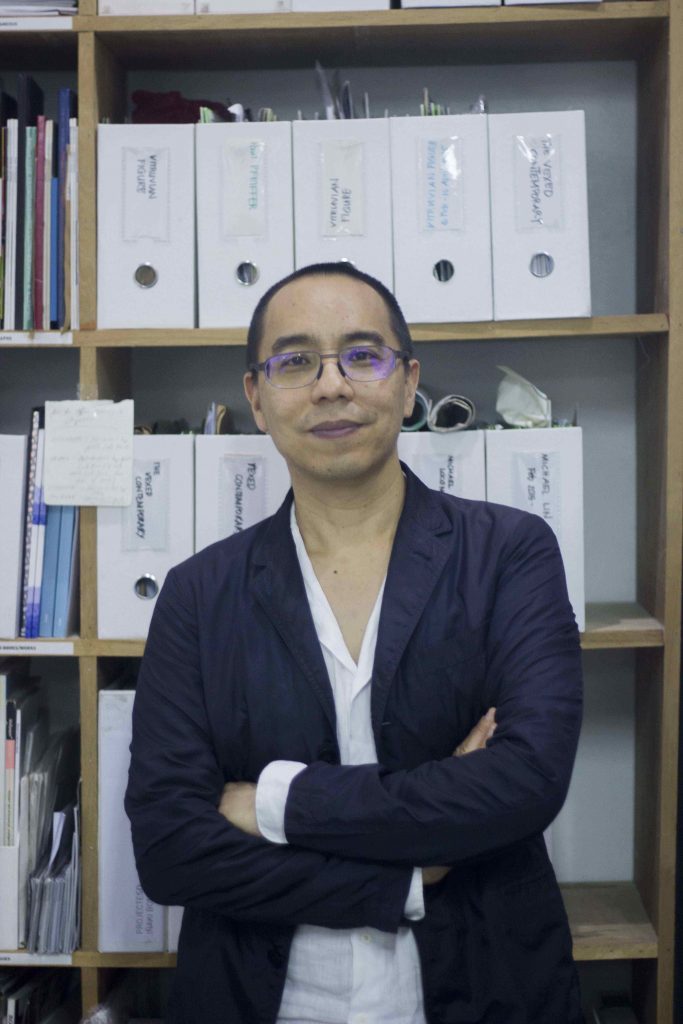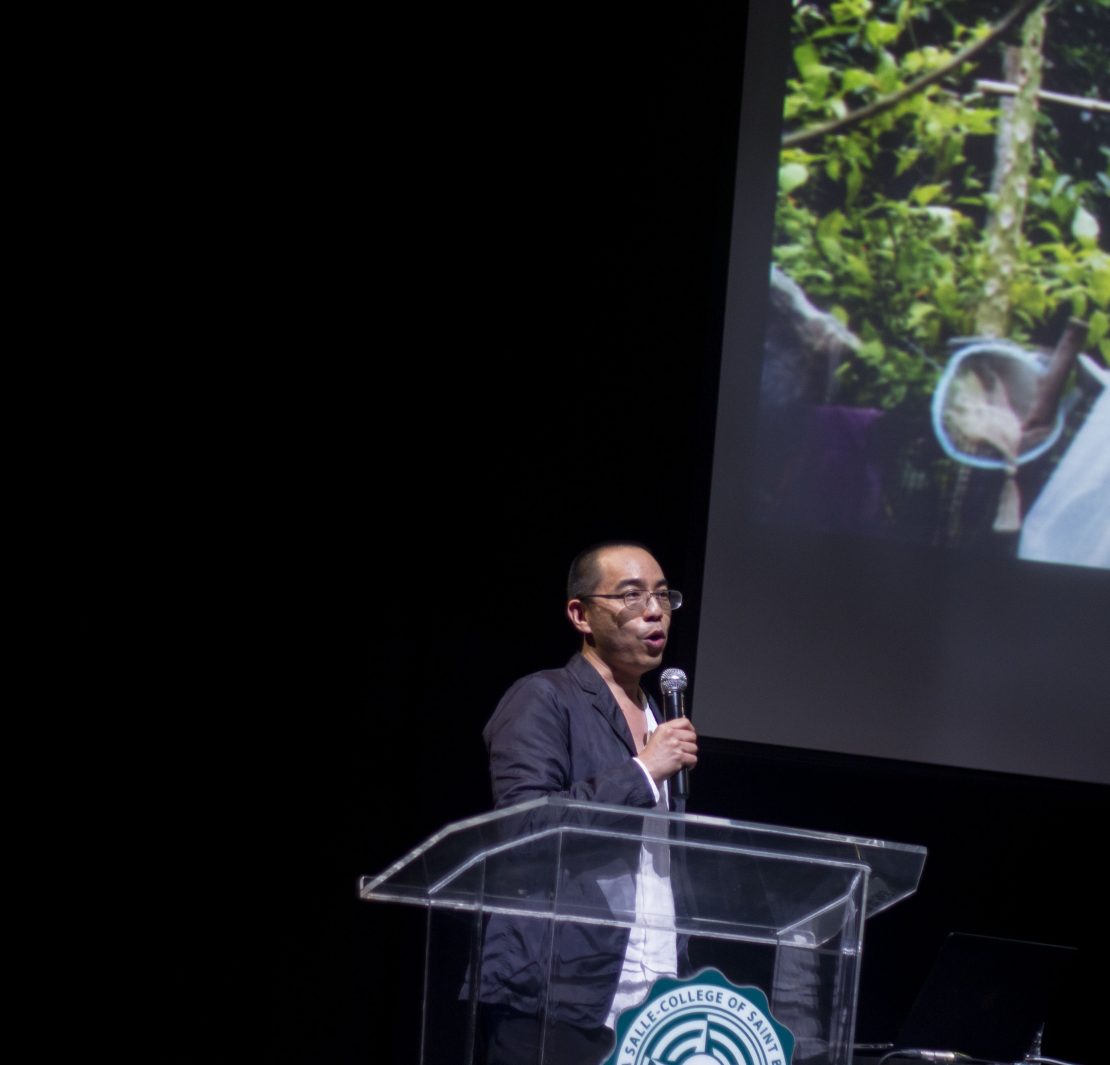Projected on one wall are two identical videos of bamboos dancing to the soft breeze of wind. The videos never seem to end. But you’ll never get tired of it, as if it has broken the rules of time. This is one of the videos exhibited at Apichatpong Weerasethakul’s “The Serenity of Madness.”

“I think our childhood and environment are very important in shaping us and the way we make films,” the 2010 Palme d’Or award recipient for the film Uncle Boonmee Who Can Recall His Past Lives says. Weerasethakul grew up in Khon Kaen, a northeastern province in Thailand. With parents who worked as doctors, he spent a lot of time at the hospital. “The space has a lifelong impact on me. The moment of waiting, it feels like everyone is moving in slow motion,” he says of those moments in the hospital. “I learned to be fascinated by microorganisms, parasites, and the sound of my own heartbeat. Then, I became interested to play with light.” Later on, a single cell organism was supposed to be one of Uncle Boonmee’s reincarnations. However, the clip didn’t make it to the final cut of the said film.
In 2015, Weerasethakul heavily explored sleep, one of his interests, in Cemetery of Splendour. The film revolves around a sleeping disease where dreams and reality become indistinguishable. For him, it’s a portrait of home and dreams. “Sleep is like cinema but much better,” he says. For Weerasethakul, sleep is a way of travel and escape. “No one can dictate our dreams, at least for now,” he says.
Weerasethakul seems drawn into the act of closing the eyes. In the northeastern region of Thailand, he encountered monks who meditate with eyes closed in isolation to achieve nirvana. “To me, it may be the dry and hard-to-cultivate land of the northeast that drive people to dream and to try to connect with something beyond everyday life, and to reach that state you have to close your eyes.”
There’s a similar image in the exhibition. Near a body of water, Tilda Swinton closes her eyes, her lips gives a slight smile. Layered on it are various random scenes from Thailand. “There’s no better time to close our eyes and to seek for better reality,” Weerasethakul says.
“The process of making a movie is more interesting than the finished work because it questions how we frame realities,” Weerasethakul reveals. “Cinema is very rudimentary because it divides time into 20 images per second. We put frames into it. It questions our intentions of framing in relation to reality.” Making films shape memories and solidify them, but only what the filmmakers have chosen. The rest remain as memories passed down onto generations until they fade or passed to a third hand like Weerasethakul.
“Cinema is a time distortion machine. We use devices to build and manipulate memories,” he says. With the advancements of technology, Weerasethakul believes that there will be a time when people would experience collective dreaming and a time when cinema would exceed our expectations. “We should congratulate ourselves that we are still in the early parts of cinema. I urge you to question what you see and appreciate them.”
Apichatpong Weerasethakul’s “The Serenity of Madness” is on view at the Museum of Contemporary Art and Design until May 14, 2017.
Writer: OLIVER EMOCLING




